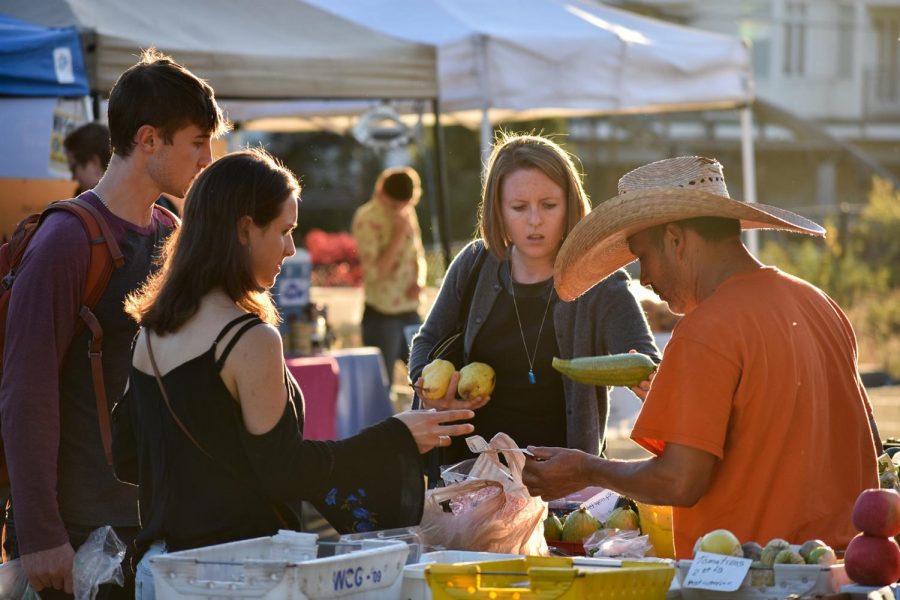Healthy food should not be a luxury
Costs in dining halls keep students from nutritious choices
KEISHA BROKAW | DAILY EVERGREEN FILE
Rafael Aviña helps customers at the Pullman farmer’s market. Healthier, local foods could benefit students.
April 4, 2018
Food at college dining halls is portrayed as comically bad in movies and TV, but that is not the problem here at WSU. Our dining halls actually produce delicious, nutritious food, but with that comes a hefty price for students.
While healthy options are available, the disparity in price between the two options should change.
While the university offers options like “naturals,” made with high-quality chicken or beef and a plethora of fresh vegetables, its pizza costs a fraction of the price for the same number of calories.
The current system keeps students full, but fails to provide the nutrients some need.
Andrew Flores, a 6-foot-3-inch, 260-pound rugby and football high school state champion, said the university should work to lower its prices. He said he believes WSU should adopt a pay-by-the-meal system similar to what Boise State has, where each meal is all you can eat, and the number of meals is capped rather than the current per-item system.
“The dining hall is really overpriced,” Flores said, “especially if you are on a specific diet.”
The current system discriminates against people who simply require more calories than what most meal plans can provide. While portion control is a positive thing, it should not be forced upon students. There should not be a one-size-fits-all system for all on-campus students.
The good news is there are many ways the university can solve this problem. The first would be subsidizing the price of healthy food so that choosing a healthier option is not a financial decision and allows more students to eat nutritious food.
The second would be a buffet-style system that allows students to eat what they want and make decisions for themselves, based on hunger instead of price.
A third option would be to use more locally sourced ingredients, which cuts importation costs and makes food more accessible for all students.
The dining halls pride themselves on how many locally sourced products they have in stock, and the quality shows between what comes from local farms and what comes from farther away. The beef coming from cattle raised in the Palouse is some of the highest-quality meat I have ever tasted, and because of the location, it is sold at a price that is obtainable on most meal plans.
The way the university monopolizes food options gives them control over what students eat. Because of this, the dining halls should encourage eating more nutrient-dense items over ones that are simply calorie-dense.
WSU provides a great service to its students by running dining halls that provide quality food in convenient locations. However, their priorities should shift from simply feeding students as cheaply as possible, to providing them with nutritious options for a healthy lifestyle.

















